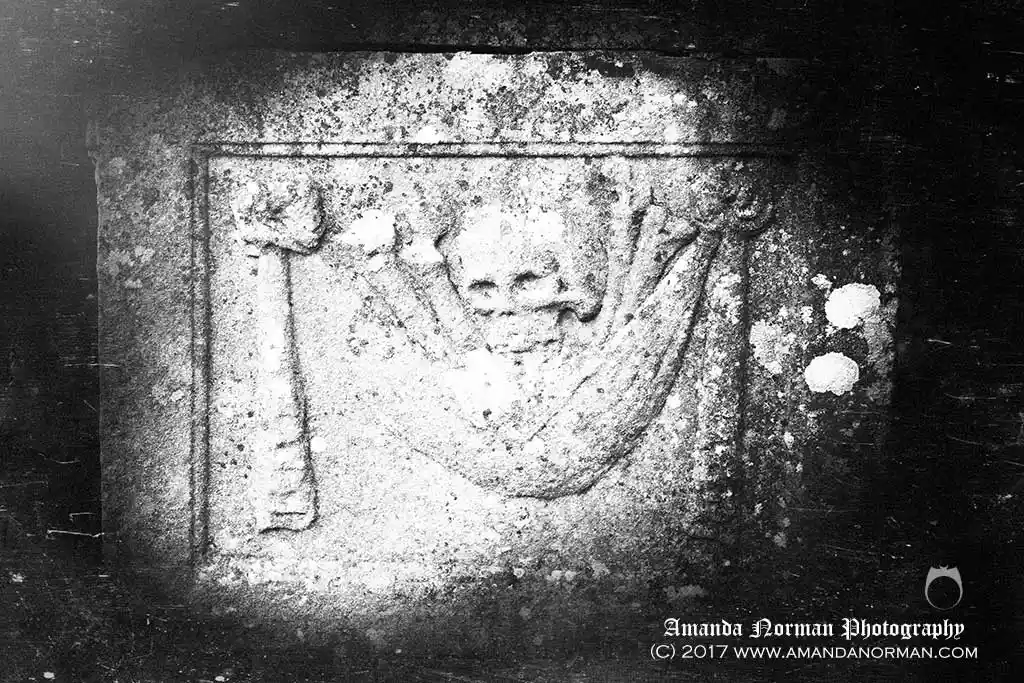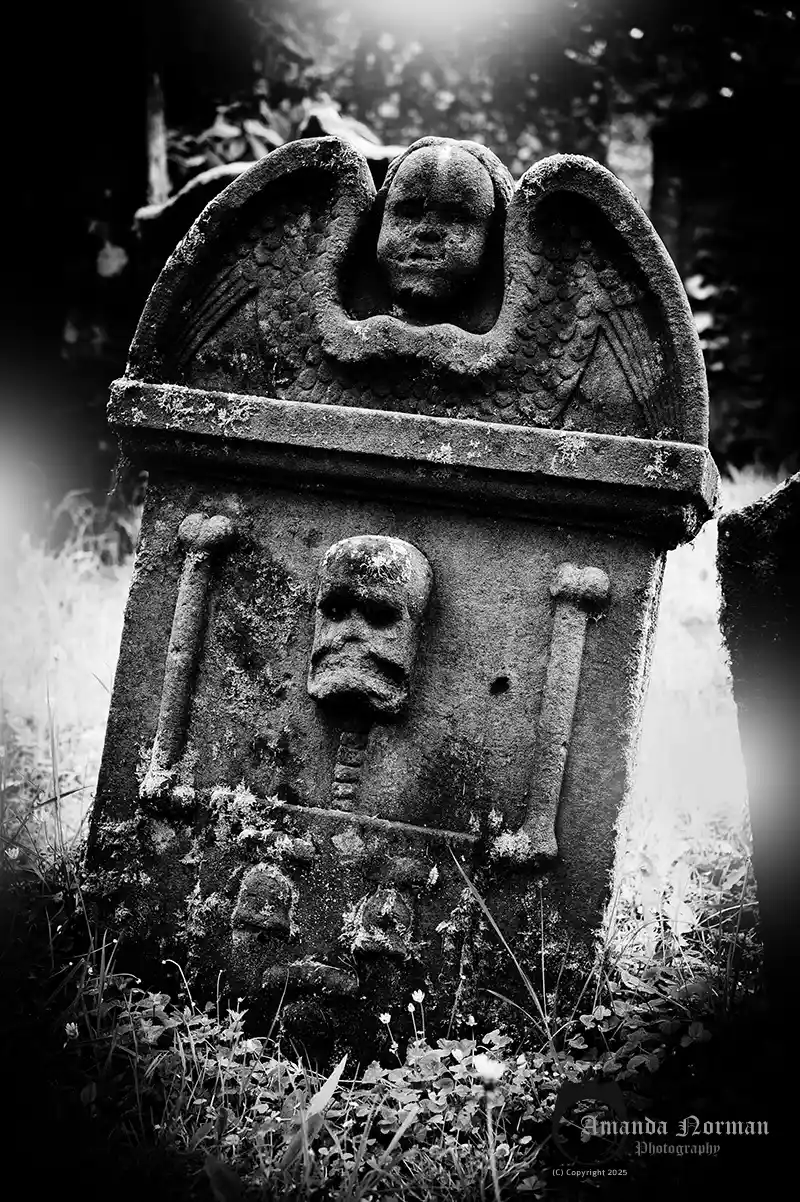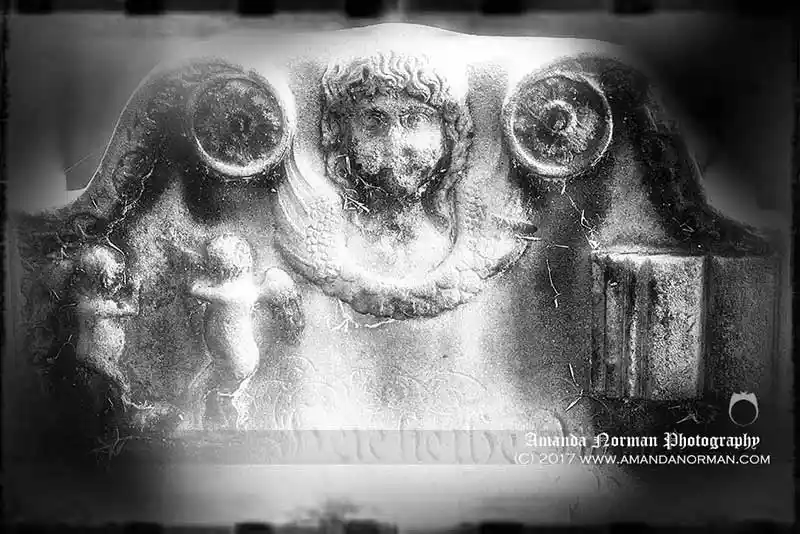To begin with, I absolutely adore the art of Memento Mori symbols that we see on century old headstones. Unfortunately, I think it’s a shame that it is no longer prevalent in our graveyards. I would be more than happy to have a skull and crossbones on my headstone, but it’s very unlikely that I will receive a burial.
In my gallery below, you will see some of the common mortality symbols and following this, I’ve included a symbols and meanings table.
Memento Mori – Remember that YOU will die


Keep death and judgement always in your eye; None are fit to live, who are not fit to die; Make use of present time, because you must take up your lodging shortly in the dust. Tis dreadful to behold the setting sun, and night approaching are your work be done.
Introducing Amanda Norman’s Memento Mori Gallery





